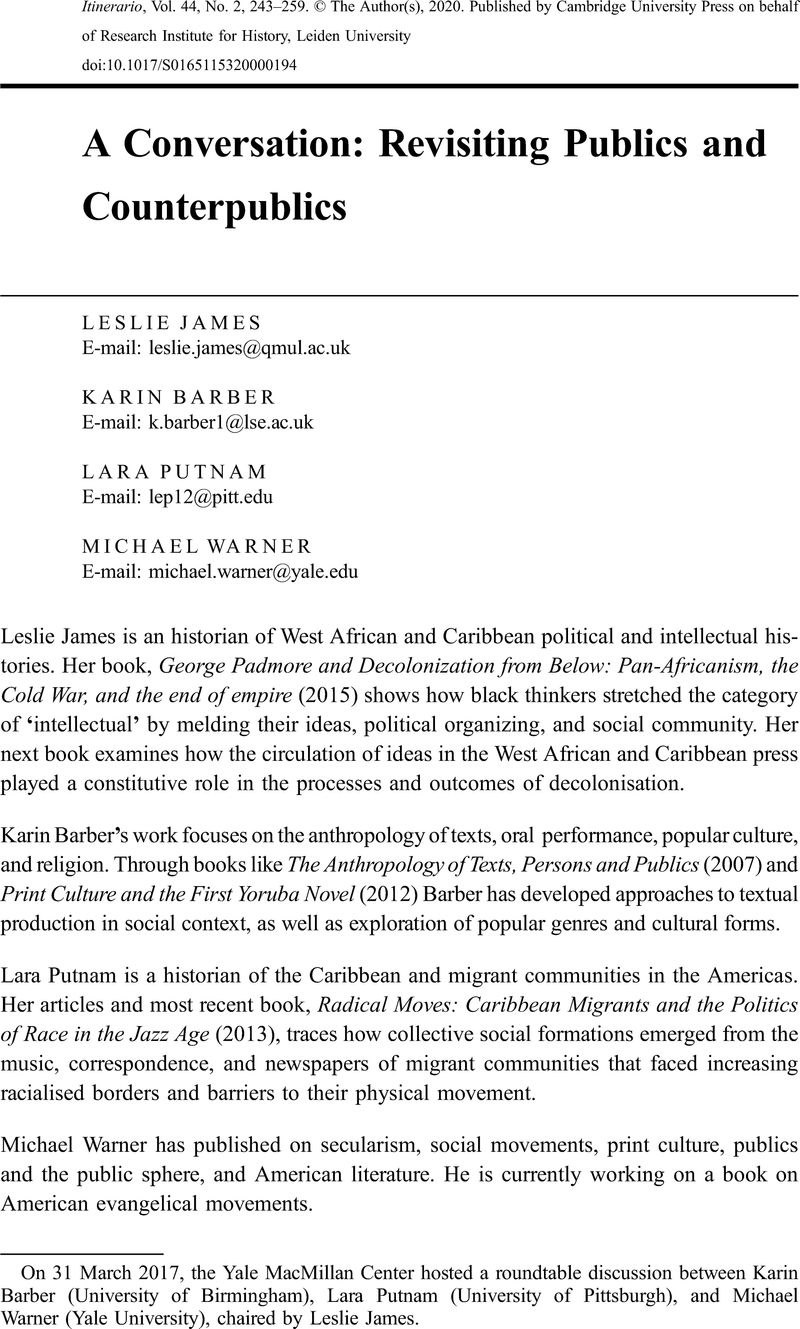Crossref Citations
This article has been cited by the following publications. This list is generated based on data provided by Crossref.
Howlett, David
and
Ross, Nancy
2023.
Creating a Feminist Religious Counterpublic: RLDS Feminists and Women's Ordination Advocacy in America, 1970–1985.
Religion and American Culture,
Vol. 33,
Issue. 2,
p.
220.
Herborth, Benjamin
2023.
Subaltern Counterpublics in Global Politics.
Politics and Governance,
Vol. 11,
Issue. 3,
p.
98.
Pak, Vincent
2023.
Lighting, signing, showing: The circulability of Pink Dot's counterpublic discourse in Singapore.
Journal of Sociolinguistics,
Vol. 27,
Issue. 1,
p.
24.
Gerrard, Jessica
Goodwin, Susan
and
Proctor, Helen
2024.
Participatory politics and education policy reform: publics and histories.
Discourse: Studies in the Cultural Politics of Education,
Vol. 45,
Issue. 4,
p.
451.




